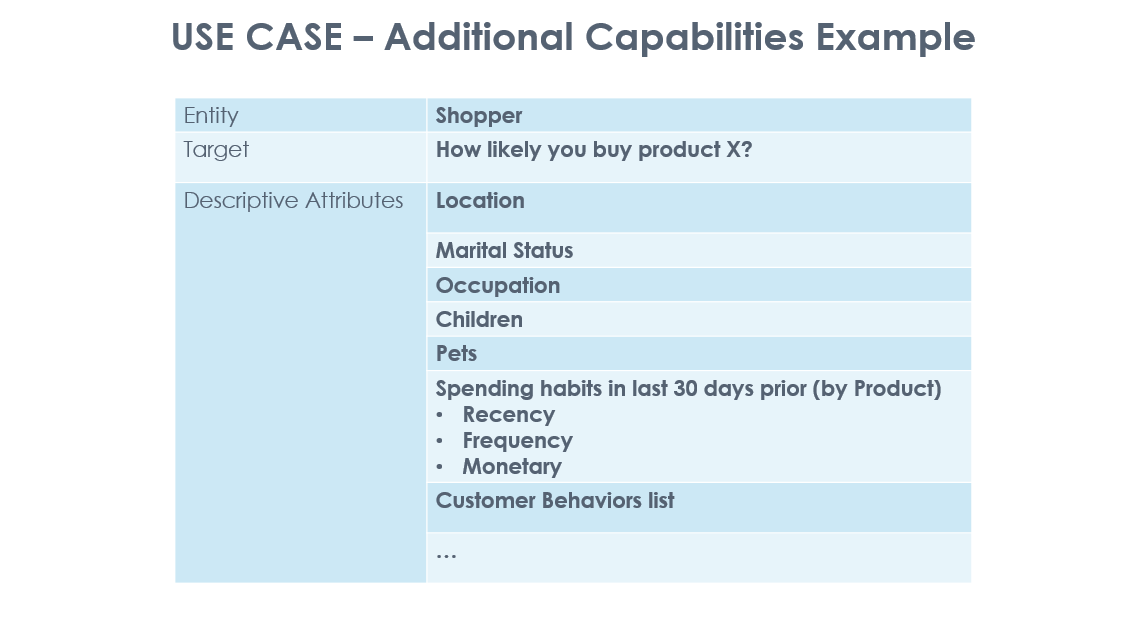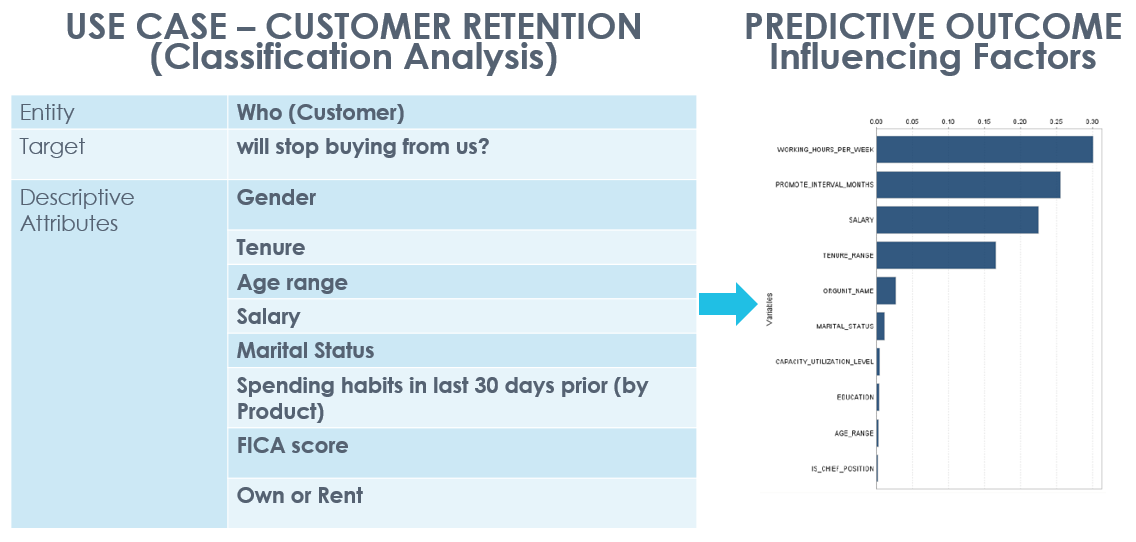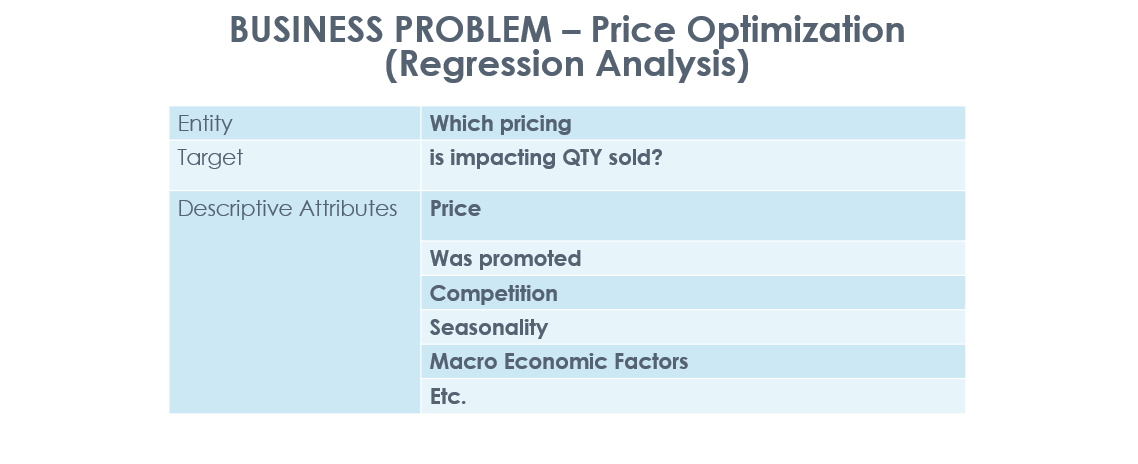Article by Pavel Ramanouski, Head of SAP BI and EPM practice at ACBaltica.
You might have heard a story about a data analyst from Target who predicted a teenage girl's pregnancy even before her parents noticed it—based only on the change in her buying habits. This story, which happened in 2012, is probably the most well-known example of predictive analytics. Technology has tremendously evolved since then, especially with machine learning and artificial intelligence. In this article, we'll delve into this revolutionary approach, explaining its nature, reviewing its benefits and challenges, and exploring its capabilities in SAP solutions and real-life use cases and success stories.
What is predictive analytics?
Predictive analytics is a form of advanced analytics that helps answer the question, "What might happen next?" As magical as it sounds, the approach is one hundred percent scientific: all predictions are based on the analysis of historical data, statistical algorithms, and machine learning techniques. By analyzing huge volumes of data, predictive analytics software recognizes trends and patterns that remain unnoticed by the human eye, thus predicting future events with high probability.
The capabilities of predictive analytics are only limited by two questions: what data can you collect, and what events can you predict based on that data? Here's just a short list that comes to mind:
Key features and capabilities
-
Demand forecasting: With predictive analytics, businesses can predict future customer demand to optimize inventory levels, reduce stockouts, and improve supply chain efficiency.
-
Customer behavior: Imagine: based on anticipating customer actions and preferences, you can enable personalized marketing campaigns, improve customer retention, and eventually increase sales.
-
Risk prediction: Identify potential risks (like credit defaults or fraud) to take preventive measures and minimize financial losses.
-
Equipment failures/Maintenance needs: Optimize business processes by predicting equipment failures or maintenance needs, reducing downtime, and increasing productivity.
-
Sales forecasting: Project future sales trends and revenue to set realistic targets, effectively allocate resources, and plan for growth.
-
Churn prediction: Identify customers at risk of leaving and enable targeted retention strategies to maintain a loyal customer base and reduce churn rates.
-
Market trends: Analyze market data to predict emerging trends and shifts, stay ahead of the competition, and adapt to changing market conditions.
-
Product development: Gain insights into what your customers need and prefer. Based on that knowledge, improve the development of new products and services ensuring they truly meet market demands to increase customer loyalty and overall the profitability of your business.
Since the approach uses historical data to predict future events, the crucial condition for implementing predictive analytics is the ability to collect high-quality data, effectively create and manage robust data infrastructure, and have skilled personnel capable of interpreting the results. All these require massive software, infrastructure, and people investments—but then, look at the benefits you can gain!
Introduction to machine learning
Machine learning is the magic that powers predictive analytics. It's a branch of artificial intelligence that creates algorithms capable of finding patterns and relationships that humans cannot detect and then learns from these patterns. In the Target story we mentioned at the beginning of our blog post, the analyst identified a few dozen products that helped him not only predict the customer's pregnancy but also determine the sex of a baby and even estimate the due date.
In the picture below, you can see the description of how machine learning helps automate the job of a sales manager (create sales inquiries and predict potential opportunities, then create sales orders and payment plans, and even predict delivery delays):
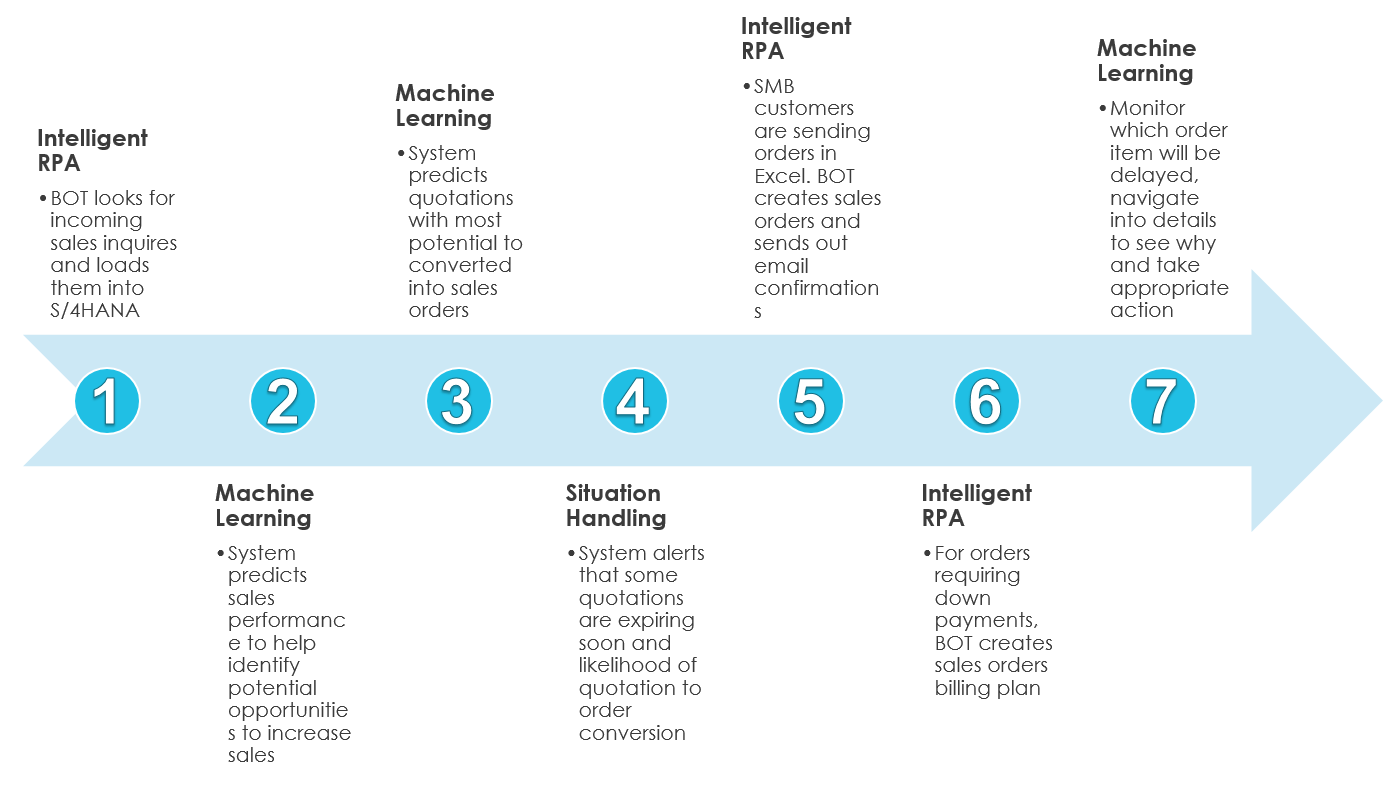
Here’s the story explained in more detail:
https://www.youtube.com/watch?v=AV_BLAjWgTs
Main tools and technologies used in SAP for machine learning
SAP leverages many tools and technologies to implement machine learning. Key components include the SAP HANA database, which provides real-time data processing and in-memory computing capabilities. The SAP Predictive Analytics Library (PAL) and the Automated Predictive Library (APL) offer a range of algorithms for predictive modeling. The SAP Business Technology Platform (BTP) also integrates machine learning services, making it easier to build and deploy models.
Predictive analytics process: stages and bottlenecks
The effect of predictive analytics depends significantly on how you set the goal, what data you use, and how you prove that the model you create is correct.
Basically, the process starts with defining a clear goal or objective, followed by collecting and cleaning large volumes of data that you think might influence your goal. This data is then used to build predictive models using advanced algorithms and techniques.
Steps in the predictive analytics process
-
Defining project objectives: Establish clear goals and desired outcomes for the predictive analytics project. Identify the business problem you aim to solve or the opportunity you want to exploit.
-
Data collection: Collect relevant historical data from various sources, ensuring that data is comprehensive and represents the problem domain. Data can come from internal databases, external sources, or real-time feeds.
-
Data cleaning and preparation: Cleanse and preprocess the collected data by handling missing values, removing duplicates, and correcting errors. The data you use for predictive analytics should first be transformed into a suitable format for analysis, including normalization, scaling, and encoding categorical variables.
-
Developing and testing predictive models: Based on the nature of the data and the defined objectives, choose the appropriate predictive model or algorithm. Ensure the model is accurate and error-free. For that, split your data into training and testing sets, and use the training set to build the predictive model and the testing set to check the model's performance. You might need several iterations to ensure the model's accuracy.
-
Model deployment: Implement the validated predictive model in a real-world environment, integrating it with business processes and systems. Ensure the model can generate predictions in real-time or as required.
-
Monitoring and maintenance: Continuously monitor the model's performance and accuracy over time. Update the model as needed to accommodate new data, changes in the business environment, or underlying pattern shifts.
On the other hand, the nature of predictive analytics is also a reason for some serious challenges in implementing this approach.
Challenges in building predictive analytics models
-
Data Quality: Predictions based on the wrong (or poor quality) data will be inaccurate, requiring thorough data cleaning, validation, and management. Overcoming this challenge involves investing in robust data governance frameworks and tools.
-
Algorithm Selection: When selecting an algorithm for predictive analytics, it's crucial to ensure it aligns with your objectives, data characteristics, and contextual requirements. To choose the correct algorithm, you must deeply understand the business processes and goals. And there's even more: before implementing the algorithm, you must ensure it operates correctly and does not introduce errors or anomalies. Tools such as cross-validation, testing, and debugging are invaluable for this validation process. Regular monitoring and updates of the algorithm are also essential to maintain its relevance and effectiveness over time.
-
Bias and Fairness: Bias refers to the inclination of an algorithm to unjustly favor or discriminate against specific groups or outcomes based on irrelevant or unfair factors. Such bias can compromise the quality and reliability of your predictions, potentially damaging your reputation and trustworthiness. To ensure fairness in predictive analytics, you should use diverse and representative datasets, employ unbiased and transparent methodologies, and identify potential sources of bias in your data, algorithms, and results. Involving stakeholders and users throughout the predictive analytics process while addressing their feedback and concerns is crucial in maintaining fairness and mitigating bias.
-
Data Integration: Integrating data from various sources can be complex and time-consuming. To succeed, you must establish seamless data integration processes to ensure a unified data view.
-
Technology Costs: Predictive analytics can help you save costs by predicting future events, but the technology itself can be costly due to the need for advanced software and hardware. To reduce costs, consider using scalable cloud-based solutions – like SAP BTP.
And more!
Predictive analytics in SAP: applications, pricing, real-world use cases
As a leading provider of cutting-edge enterprise resource planning solutions, SAP offers a range of products with predictive analytics capabilities. It even has a product named SAP Predictive Analytics. Unfortunately, it will run out of mainstream maintenance at the end of 2024, but no worries: SAP now has much more to offer.
These days, when we speak about predictive analytics capabilities in SAP software, three products come to mind:
-
SAP S/4HANA: a robust ERP system that leverages in-memory computing and advanced analytics to provide real-time insights and predictive analytics capabilities.
-
SAP Analytics Cloud: combines business intelligence, planning, and predictive analytics in a single platform.
-
SAP Business Technology Platform (SAP BTP): offers advanced predictive analytics capabilities, enabling businesses to integrate machine learning models, utilize real-time data insights, and enhance decision-making processes across various applications.
Integrating predictive analytics and machine learning within SAP software
Embedding Predictive Algorithms in SAP S/4HANA (Embedded)
Predictive algorithms can be directly embedded within SAP S/4HANA using the Integrated Scenario Lifecycle Management (ISLM), Predictive Analysis Library (PAL), and Automated Predictive Library (APL). This approach allows businesses to leverage built-in predictive capabilities seamlessly within their core S/4HANA environment.
Consuming Predictive and ML Services from SAP Business Technology Platform (Side-by-Side)
Predictive and machine learning services from the SAP Business Technology Platform (BTP) can be used alongside S/4HANA. This method uses SAP Data Intelligence and SAP AI Business Services, incorporating various predictive algorithms and tools like PAL, APL, R, and Python, providing advanced analytics capabilities.
Leveraging Predictive Analytics with SAP Analytics Cloud (Explorative Analytics with Side-by-Side)
Businesses can utilize SAP Analytics Cloud for explorative analytics, integrating it with SAP S/4HANA and SAP Data Warehouse Cloud. This platform offers tools like Smart Predict and Smart Assist, which support business intelligence and enterprise planning through augmented analytics.
Enhancing and Extending Predictive Analytics and ML Services (Extensibility of Models with External Data)
This approach enhances and extends predictive analytics by integrating external data and advanced machine learning models from SAP BTP. The combination of SAP Analytics Cloud, SAP Data Warehouse Cloud, and hybrid machine learning models allows for comprehensive and adaptable predictive analytics solutions.
Approaches of predictive analytics and machine learning in SAP:
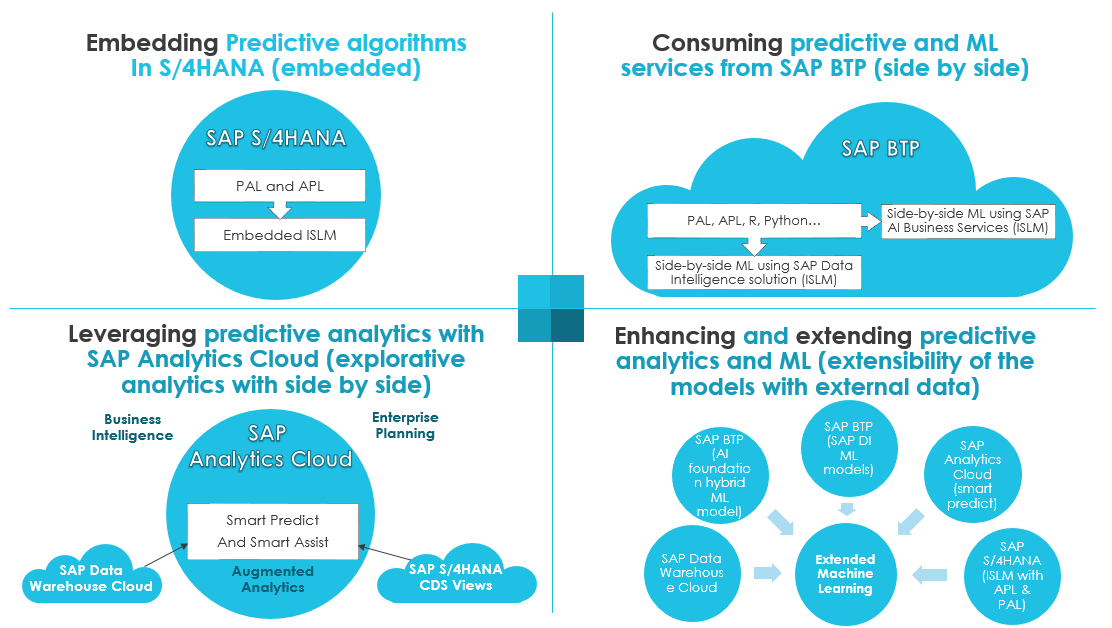
SAP Predictive Analytics Pricing
The pricing of predictive analytics functionality within SAP products depends on which product (or set of products) you choose and on the specific needs and scale of the business. SAP typically offers custom pricing models tailored to each enterprise's unique requirements. Factors influencing pricing include:
-
The number of users.
-
The volume of data processed.
-
The level of integration with existing systems.
Real-world Use Cases of Predictive Analytics in SAP
As we have already mentioned, the areas where you can benefit from implementing predictive analytics are only limited by the data you have.
Use-case examples:
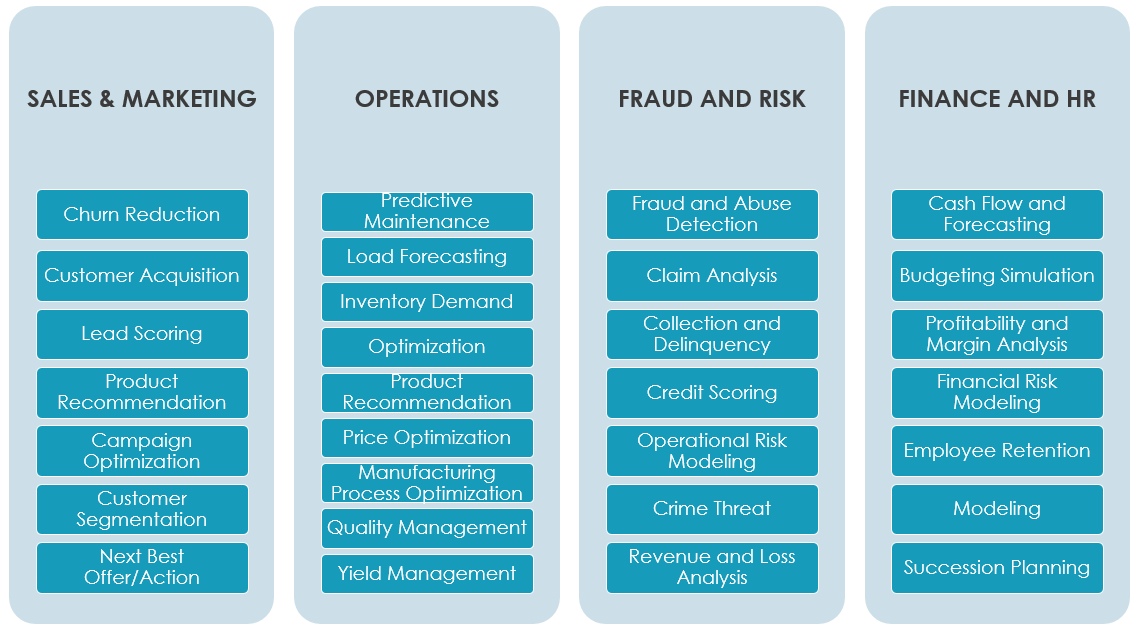
In ACBaltica, we had a case with a bank that aimed to identify what influences their customers' decisions and determine the customer profile likely to buy the new bank's product. The bank had a lot of data about their customers: about 150 parameters. Our goal was to determine which factors influence customers' buying decisions and give them scores. Sometimes, combinations of factors, like salary and location, played a crucial role, too. We started by training our predictive analytics neural network with data from 10,000 customers who had already purchased. After that, we tested it with a different set of customer data to see if it could accurately guess who had bought the product, and it nailed it 94% of the time! The next step was to run customers' data who had not tried the new product through our trained neural network. We then contacted those with a purchase probability higher than 80%.
This example is a brief and simple explanation of the process. The gallery contains more examples of predictive analytics usage:
Conclusion
Predictive analytics is all about using past data to predict future events, like a magical crystal ball for businesses. Today, this technology has advanced significantly thanks to machine learning and AI.
So, what can predictive analytics do for you? It can help businesses forecast customer demand, understand customer behavior, manage risks, and streamline operations. SAP has integrated these powerful capabilities into its products, like SAP S/4HANA, SAP Analytics Cloud, and the SAP Business Technology Platform (BTP). These tools use advanced libraries and algorithms to help businesses make smarter decisions.
The benefits are huge! With predictive analytics, companies can forecast trends more accurately, make informed decisions, personalize customer experiences, detect fraud, and manage resources better. However, it does require good-quality data, solid infrastructure, and skilled personnel, which can be an investment.
But think of the rewards! Improved forecasting, better decision-making, and staying ahead of the competition are just some advantages. For example, one of our clients used SAP's predictive analytics to identify customers likely to buy a new product with 94% accuracy – pretty impressive, right?
In a nutshell, SAP's predictive analytics can transform how businesses operate, making them more efficient and proactive. It's like having a crystal ball but backed by data and science!


